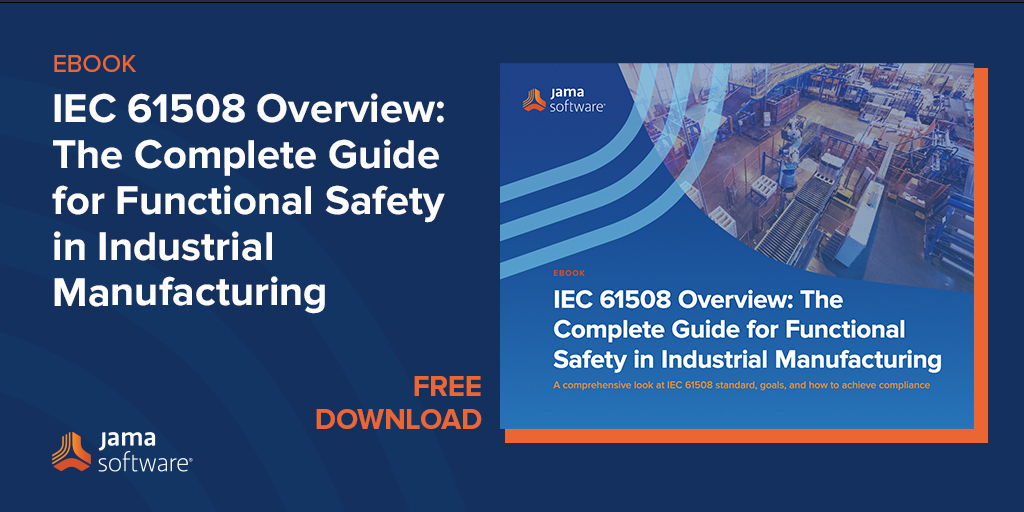In this blog, we preview our eBook IEC 61508 Overview: The Complete Guide for Functional Safety in Industrial Manufacturing. Download the entire eBook to learn more!
IEC 61508 Overview: The Complete Guide for Functional Safety in Industrial Manufacturing
Industrial manufacturing firms are undergoing rapid transformation as they navigate talent shortages, supply disruptions, digital adoption acceleration, and more. At the same time, they work diligently to accelerate time to market, streamline risk
management, and keep accuracy and safety at the forefront.
Eliminating 100% of risk is not always possible, but manufacturers continuously seek strategies to mitigate potential safety issues. That’s why industry experts in industrial manufacturing have created standards
such as IEC 61508 to reduce risk and support the development of safety-sensitive products.
However, if you haven’t implemented such standards in the past, you may have many questions. What is IEC 61508? What organizations need to adhere to it? And why does this standard matter?
Understanding the answers to these questions will assist you with implementing the necessary strategies and tools to mitigate potential safety issues and achieve IEC 61508 compliance for industrial product development.
What Is IEC 61508?
Industrial manufacturing firms need to prevent dangerous failures that may occur with the use of their system. The challenge is that oftentimes systems are incredibly complex with many interdependencies, making it difficult to fully identify every potential safety risk.
According to the International Electrotechnical Commission, leading contributors to failure include:
- Systematic or random failure of hardware or software
- Human error
- Environmental interference, such as temperature, weather, and more
- Loss of electrical supply or other system disturbance
- Incorrect system specifications in hardware or software
IEC 61508 creates requirements to ensure that systems are designed, implemented, operated, and maintained at the safety level required to mitigate the most dangerous risks. The international standard is used by a wide range of manufacturers, system engineers, designers, industrial companies, and others that are audited based on compliance. The standard applies to safety-critical products including electrical, electronic, and programmable-related systems.
RELATED POST: Requirements Traceability Benchmark
In our eBook, IEC 61508 Overview: The Complete Guide for Functional Safety in Industrial Manufacturing, we examine:
- What IEC 61508 is, and why it matters
- The seven parts of the functional safety standard
- Hazard and risk analysis for determining SIL

